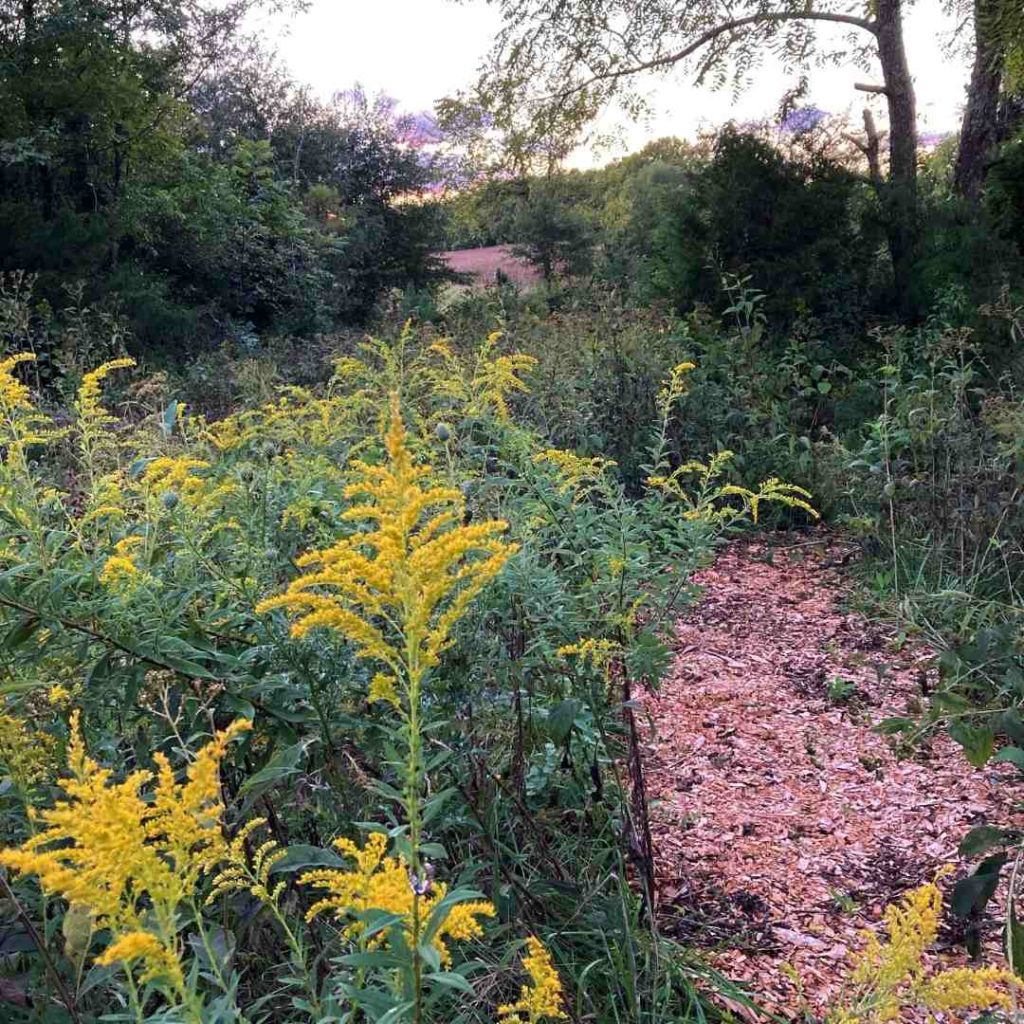We’ve had a thick patch of crownbeard on our property for years. I haven’t been much of a fan of it. It does make a nice yellow or white flower in the fall and ice crystal flowers in the winter. But in between, it seems to crop up everywhere … especially in the garden. I get tired of removing it from my garden. The big patch we have was so thick that we couldn’t easily get into it to observe the pollinators it attracted.
In August I got the idea to create a wildflower spiral – a woodchip walkway out of the big crownbeard patch. It took us fifteen days working about an hour a day to get the spiral created. I was so happy the day we completed it and I sat down in the center of the spiral. A hummingbird flew right in front of my face and hovered there looking at me for about 30 seconds. Then a large blue dragonfly lighted on my arm for about the same length of time. We’ve seen assorted butterflies and bees as well. It’s been a great way to observe the pollinators we’ve made it our mission to attract.

It’s interesting because I thought this patch was all crownbeard, but we’ve discovered other plants now that the spiral has been created. As late summer / early fall arrived, we got a beautiful crop of goldenrod. We also have one of my favorites – purple ironweed. We also have bull thistle and a few other wildflowers. Last week I dead-headed a bunch of wildflowers from our front yard and will be planting seeds in the wildflower spiral in the next week so that we have more diversity and colors next year.
Medicinal Qualities of Goldenrod
But back to that goldenrod. I first made goldenrod tea last fall that we harvested from along our half-mile driveway. It has a pleasant flavor – especially if you add a little honey with it.
Goldenrod (Solidago canadenis, S. odora, S. vigaurea, and many others) is part of the Asteraceae (Daisy) family. A lot of people think goldenrod is the source of their allergies in late summer, but the pollen from it does not float in the air. It’s heavy and sticky. So insects pollinate the plant instead of the wind.
Goldenrod is antifungal, diuretic, diaphoretic, anti-inflammatory, expectorant, astringent, antiseptic, and carminative. Goldenrod is great for the kidneys, urinary track, skin, allergies, and cardiovascular system. As I said you can make a tea from it (I just steeped it in boiling water, added some mint and let it sit). You can also use it in a tincture, as a poultice, or infused in oil, or make a powder from it.
TheHerbalAcademy.com has a good overview of the medicinal benefits of goldenrod as well as a recipe for the tea.
